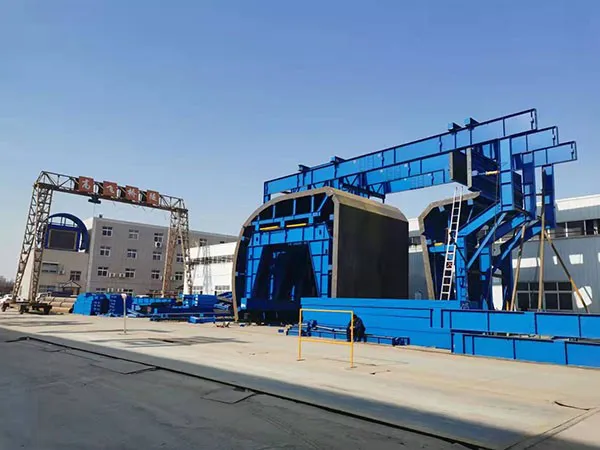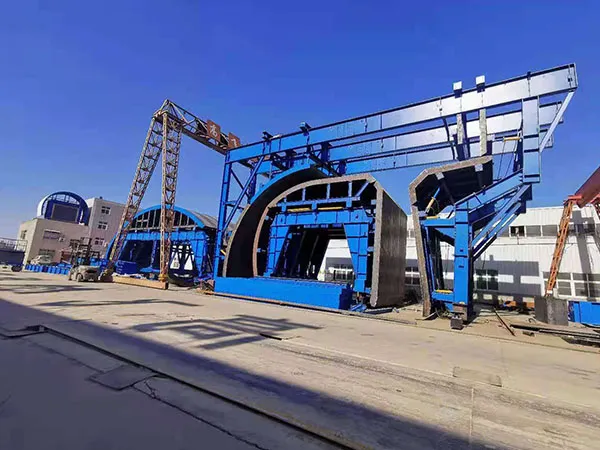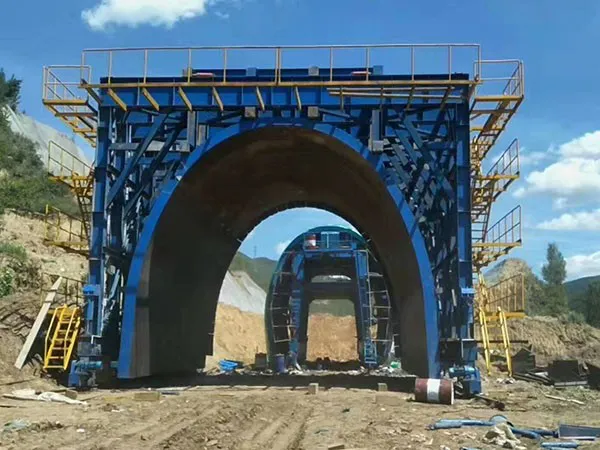Improving the efficiency of tunnel lining construction is a multifaceted challenge that requires a holistic approach, from initial design to on-site execution. Key strategies focus on technological innovation, process optimization, and a highly coordinated workforce.

Select the Right Lining Method: The choice between a precast segmental lining and a cast-in-place concrete lining is the most fundamental decision.
Precast Segments: Ideal for long, straight tunnels, especially in soft ground. Segments are manufactured off-site in a controlled environment, which ensures high quality and allows for simultaneous production and excavation, greatly speeding up the overall project.
Cast-in-Place (CIP): Often more suitable for complex geometries, short tunnels, or areas where ground conditions make precast segments impractical. The use of advanced, fully automated tunnel lining trolleys can significantly increase the speed and precision of CIP construction.
Innovate with Concrete Mixes:
Fiber-Reinforced Concrete: Adding structural fibers (e.g., steel or synthetic) can partially or completely replace traditional steel bar reinforcement. This reduces the time and labor required for rebar placement and can also improve the concrete's tensile strength and durability.
High-Performance Concrete: Utilizing high-early-strength concrete with chemical admixtures can reduce the curing time required before formwork stripping and segment handling, accelerating the construction cycle.
Self-Compacting Concrete (SCC): This highly fluid concrete flows easily into the formwork, even around complex reinforcement, without the need for vibration. This saves time, reduces labor, and improves the final quality of the lining by eliminating honeycombing.
Implement Integrated Design: Design the tunnel and its lining from a "constructability" perspective. This includes using numerical modeling and Finite Element Analysis (FEA) to simulate construction stages, identify potential issues, and optimize the lining thickness and reinforcement to be both safe and efficient.
Utilize Fully Automated Formwork Systems: The tunnel lining trolley is the heart of the operation.
Telescopic and Hydraulic Systems: Modern trolleys with telescopic formwork and hydraulic systems allow for rapid advancement and precise positioning. They can be operated by a small crew, reducing manual labor and the risk of error.
Integrated Functions: Look for trolleys that combine multiple functions, such as formwork stripping, moving, and re-erecting, into a single, automated cycle.
Adopt Smart Technologies and Robotics:
Automation: Integrate automation for concrete pouring, vibration, and curing to ensure consistency and speed.
Real-time Monitoring: Use sensors and monitoring systems to track concrete strength, temperature, and pressure. This data allows for real-time adjustments and ensures that the lining meets quality specifications, preventing costly rework.
Robotics: Robotic systems can be used for repetitive or hazardous tasks like shotcrete application, surveying, or handling materials, which improves safety and consistency.

Optimize Logistics and Supply Chain:
Just-in-Time Delivery: Coordinate with concrete suppliers and precast segment manufacturers to ensure materials are delivered precisely when needed. This minimizes on-site storage space and reduces potential material degradation.
Dedicated Conveyor Systems: Use continuous conveyor systems instead of trains or trucks to transport muck out of the tunnel and materials into the tunnel. This can drastically improve the flow of operations and avoid logistical bottlenecks.
Establish a Lean Construction Methodology:
Standardize Processes: Develop clear, repeatable procedures for every step of the lining process, from formwork assembly to concrete curing. This reduces variability and accelerates the learning curve for the crew.
Minimize Waste: Focus on reducing material waste, re-using excavated material as aggregate where possible, and minimizing downtime to improve overall productivity.

Ensure Worker Training and Safety:
Training: A well-trained crew is a more efficient crew. Invest in training for the operation of specialized equipment and new technologies.
Safety: A safe work environment prevents accidents, which are a major cause of project delays and increased costs. Implementing clear safety protocols and using technology to reduce human exposure to high-risk areas is critical.
By combining these strategies—from innovative design and materials to advanced technology and streamlined on-site management—tunnel construction projects can achieve a higher level of efficiency, leading to faster completion times, reduced costs, and a safer working environment.
Gaofei
Address: 200m east of tulip garden, group 12 of zhangling community, hongshan street office, hongshan town, xigong district, Luoyang
Tel: +8616638856888
Contact: Gaofei Huang
Mobile: +86-18637923976
Phone: 0379-80881719/ 0379-60162687
QQ: 286827457
E-mail: gaofei@gf-bridge-tunnel.com